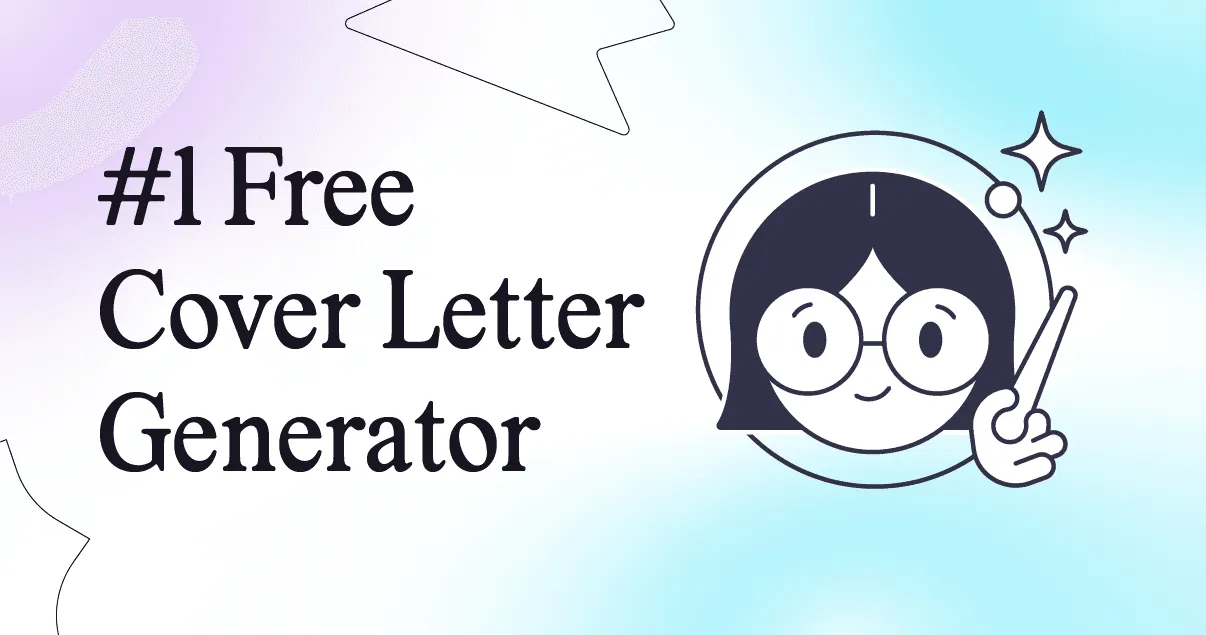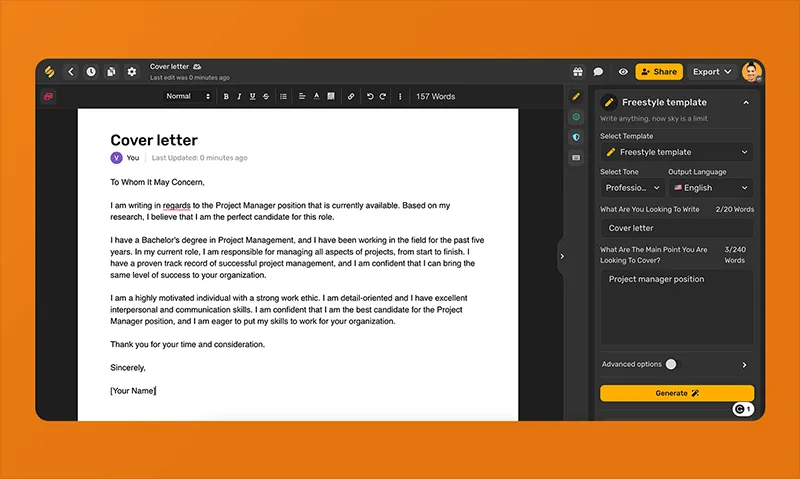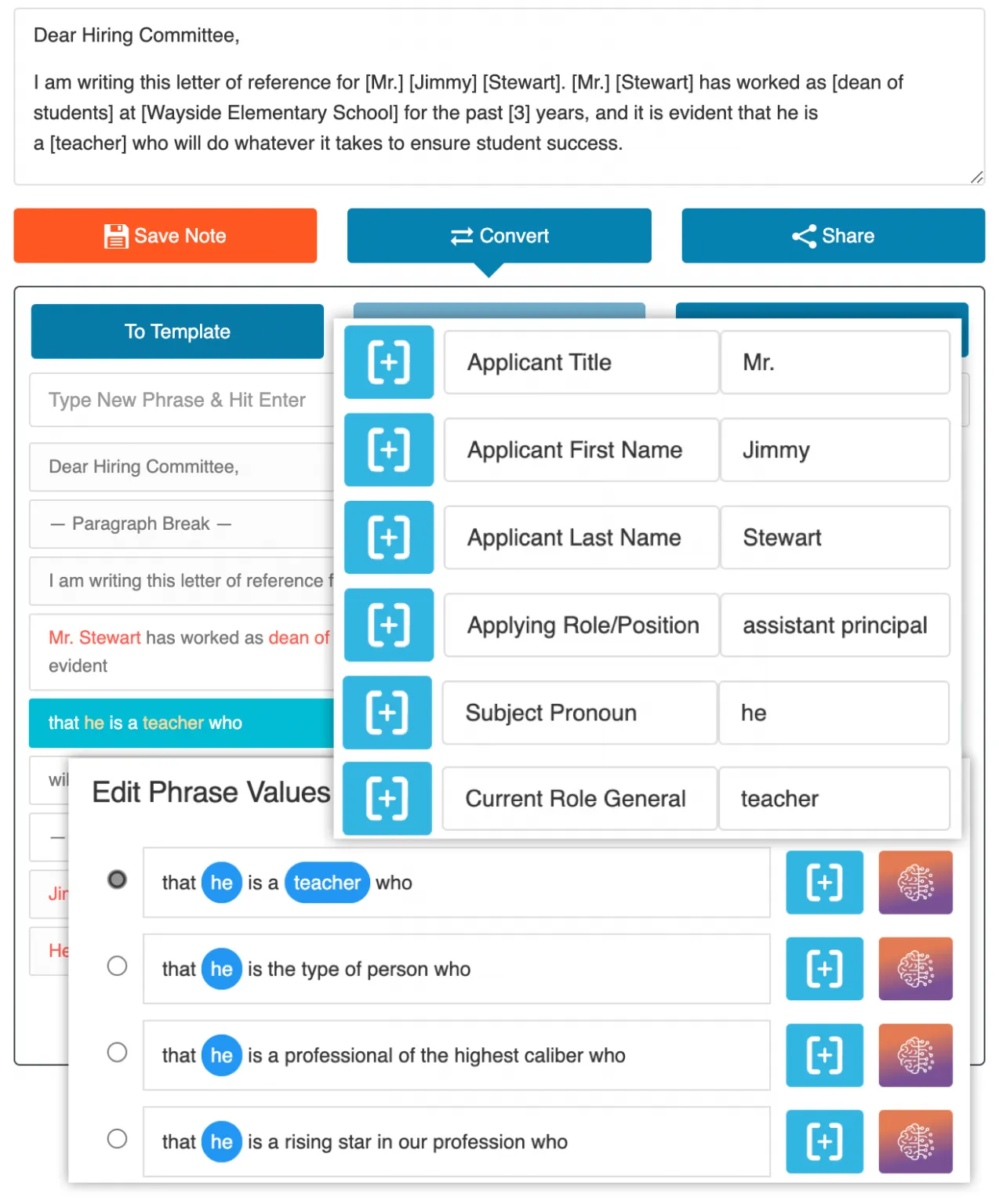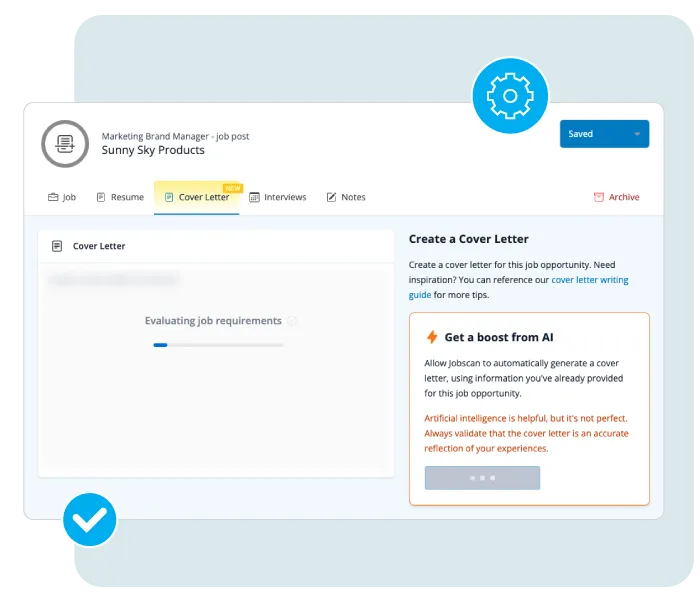Why Use a Cover Letter Generator?
In today’s competitive job market, a well-crafted cover letter can be the difference between landing an interview and getting lost in the shuffle. But writing a compelling cover letter can be daunting. It requires time, effort, and a strong understanding of what employers are looking for. That’s where a cover letter generator comes in. These tools simplify the process, providing a framework to help you create a professional and personalized cover letter quickly. The ReadWriteThink cover letter generator, in particular, offers a user-friendly experience with guided steps and helpful prompts to ensure you address all the key aspects.
Whether you’re a recent graduate, a seasoned professional, or someone looking to change careers, a cover letter generator can streamline your job application process. By using a generator, you save time, reduce the stress of starting from scratch, and increase your chances of making a positive impression on potential employers. The generator provides a structure and assists in structuring your thoughts. Also, it ensures you include all the essential information necessary to present yourself effectively.
Benefits of Using a Cover Letter Generator
The benefits of using a cover letter generator extend beyond mere convenience. One of the most significant advantages is the time saved. Instead of spending hours drafting and revising, you can create a well-structured cover letter in a fraction of the time. Cover letter generators also help to ensure that your letter includes all the necessary elements. They provide prompts and suggestions for content, making it less likely you’ll overlook critical information. They provide guidance, ensuring you address the specific requirements of your application.
Another benefit is the ability to customize your cover letter to match the job and company. ReadWriteThink and similar generators typically allow you to input your skills, experiences, and the specifics of the job you’re applying for. This ensures your letter is tailored to each opportunity, increasing your chances of getting noticed. Furthermore, these tools help you avoid common writing pitfalls, such as using generic language or making grammatical errors, leading to a polished and professional document.
How ReadWriteThink Cover Letter Generator Works

The ReadWriteThink cover letter generator offers a straightforward and intuitive approach to creating a cover letter. It typically begins by asking you to provide basic information, such as your name, contact details, and the job you are applying for. The generator then prompts you to enter details about your skills, experience, and qualifications. The system utilizes templates and examples, which enables users to start with a pre-written structure. The generator tailors the content to align with the information. Also, it provides options for different formatting styles and layouts, giving you control over the final appearance of your letter.
The ReadWriteThink generator offers flexibility and control over the content of your cover letter. Many generators allow you to preview your letter as you make changes, so you can see how your input translates into a finished document. Finally, ReadWriteThink offers guidance on the structure of a cover letter, so users easily create a document that meets their needs. Furthermore, the interactive design of the ReadWriteThink generator ensures that users easily personalize the content and tailor it to match the job requirements.
Step-by-Step Guide to Using the Generator
Using the ReadWriteThink cover letter generator is designed to be an easy process. First, you start by visiting the ReadWriteThink website and navigating to the cover letter generator tool. You will then be prompted to provide information to build your cover letter. This typically includes your contact information, the name of the hiring manager (if known), and the job title and company you’re applying to. Take the time to carefully input the details, since this information will be used throughout your cover letter.
After providing basic information, the generator will guide you through sections to write about your skills, experience, and accomplishments. ReadWriteThink may offer suggestions to help you write persuasive content. Review the content before generating a draft. Once complete, review the letter. Make any necessary changes to make it sound professional. The generator helps tailor your application and maximize your chances of getting an interview.
Customizing Your Cover Letter
Customization is key to making your cover letter stand out. Once you’ve generated the basic framework, take the time to personalize it. Start by reviewing the job description carefully. Identify the key skills and qualifications the employer is seeking. Then, ensure that your cover letter highlights how your experiences match the job requirements. You can tailor your cover letter to demonstrate how your skills and experience align with what the employer is looking for.
Personalize your letter by adding specific details about the company. Research the company’s values, mission, and recent projects. Then, reference them in your letter to show that you understand their business and culture. This will make a stronger impression than a generic cover letter. Also, use the generator to edit your letter to match your voice. Make sure your letter reads smoothly, sounds professional, and accurately reflects your brand. Personalization turns a standard template into a powerful tool.
Key Sections to Include

A well-structured cover letter typically includes several key sections. Start with a professional heading that includes your contact information and the date. Address the hiring manager by name, if possible. Next, include a strong opening paragraph that grabs the reader’s attention and states your purpose for writing. Briefly mention the job you’re applying for and your interest in the company.
In the body paragraphs, highlight your relevant skills and experiences. Use specific examples to showcase your achievements and quantify your results whenever possible. Finally, close with a strong call to action. Express your enthusiasm for the opportunity and indicate your willingness to discuss your qualifications further in an interview. Proofread your letter carefully to ensure it is free of errors and is well-formatted.
Writing a Strong Opening
The opening paragraph is your chance to make a great first impression. Start by stating the position you’re applying for and how you found the job posting. Mention your enthusiasm for the role and the company. Consider using a ‘hook’ to grab the reader’s attention. This could be a brief anecdote, a statement about your passion, or a key accomplishment. Avoid generic phrases. Be sure the introduction demonstrates why you’re the best candidate for the role. The opening sets the tone for your entire letter.
When writing your opening, tailor it to the specific job and company. If you’re applying for a role at a company with a strong emphasis on innovation, highlight your experience with creative problem-solving. If the company values teamwork, mention your collaborative experience. Researching the company’s values can help. The goal is to catch the reader’s attention and establish why they should read the rest of your letter. A strong introduction will show your ability to think strategically about your career goals.
Highlighting Your Skills and Experience
The body of your cover letter is where you showcase your skills and experience. Review the job description and identify the key requirements. Then, highlight the skills and experiences that align with these requirements. Provide specific examples of how you’ve used these skills in previous roles. Be sure to quantify your achievements. For example, instead of saying you ‘improved sales’, say you ‘increased sales by 15% in one quarter’.
Use action verbs to make your descriptions dynamic and engaging. Avoid simply restating your resume. Instead, provide more detail about your accomplishments and the impact you made in each role. Show, don’t just tell. Instead of saying you’re a good communicator, describe a time when you effectively communicated with a team to achieve a goal. Emphasize how your skills and experience align with the needs of the company.
Showcasing Your Achievements

Don’t just list your job duties in your cover letter; highlight your achievements. This helps potential employers quickly understand your value. Start by brainstorming your accomplishments in each role. Use the STAR method (Situation, Task, Action, Result) to structure your descriptions. Begin by briefly describing the situation you faced. Then, explain the task you were assigned. Describe the actions you took and the results you achieved.
Quantify your achievements whenever possible. For instance, instead of saying you ‘managed projects’, say you ‘managed over 10 projects’. Showing concrete results demonstrates your impact. Use numbers, percentages, and specific metrics to prove your accomplishments. When showcasing your achievements, focus on results that align with the job description’s requirements. Use your achievements to show how you can contribute to the company’s goals.
Writing a Powerful Closing
Your closing paragraph is your final chance to leave a lasting impression. Reiterate your interest in the position and the company. Reiterate your qualifications to show how you would be a good match. Express your gratitude for the reader’s time and consideration. Be confident and enthusiastic. State your availability for an interview and provide your contact information.
End your cover letter with a strong call to action. This could be a statement such as, ‘I am eager to discuss how my skills can benefit your company.’ Avoid using generic closings. Customize the end of your letter to match the tone of your letter. By ending with a clear call to action, you increase the likelihood of getting an interview.
Tips for Proofreading and Editing
Before you submit your cover letter, proofread it carefully. Check for any grammatical errors, spelling mistakes, or typos. Use spell-check and grammar-check tools. Proofread your letter multiple times, ideally reading it aloud to catch any awkward phrasing. Ask a friend or colleague to review your letter. A fresh pair of eyes can often catch errors that you might miss. Proofreading is a vital step in making a good impression on the hiring manager.
Pay attention to the overall formatting of your letter. Ensure that the layout is clear and easy to read. Use consistent fonts and spacing. Make sure your letter is well-organized and that your paragraphs are concise and to the point. Avoid using jargon or overly complex language. Your letter should be easy to understand and engaging. A well-proofread cover letter conveys professionalism and attention to detail.
Common Mistakes to Avoid

Avoid common mistakes that can hurt your chances of getting hired. Don’t use generic or overly formal language. Make sure your letter is customized to each job and company. Do not simply repeat your resume; expand on your experiences and achievements. Avoid making grammatical errors or spelling mistakes. Always double-check for any typos.
Another common mistake is using a negative tone or focusing on what you don’t want. Instead, highlight your skills and accomplishments. Never include irrelevant information. Keep your letter focused on the job requirements. Ensure your letter is well-organized and easy to read. Your cover letter should be informative, enthusiastic, and customized to each opportunity.
Examples of Successful Cover Letters
Looking at successful cover letter examples can help you learn what works. Many resources online provide examples of cover letters for a variety of jobs and industries. Pay attention to how the letter is structured. Note the opening paragraph to get the reader’s attention. Review how candidates highlight their skills and experience. Analyze how the candidate conveys enthusiasm.
Use these examples as a guide to create your own letter. Adapt the successful templates to match your background and the job. Pay attention to the language, tone, and formatting. By studying successful cover letter examples, you can discover the best practices. Also, you can get inspiration to showcase your abilities.
When to Use a Cover Letter Generator
A cover letter generator is a useful tool in various situations. If you’re applying for numerous jobs, a generator can help you create cover letters quickly and efficiently. Generators are beneficial to job seekers across industries. Use them to assist in job searches. If you lack experience with professional writing, using a cover letter generator can give you a great start.
Even if you’re a seasoned professional, a generator can save you time and ensure your letter is well-structured and tailored to each job. Consider a cover letter generator whenever you want to save time, improve your writing, and increase your chances of getting hired. The tool helps you create a strong application, especially when applying for a competitive role.
Improving Your Chances of Getting Hired

Using a cover letter generator can significantly improve your chances of getting hired. By providing a framework, it helps you create a professional, well-structured letter. Customizing your letter to match the job description shows that you understand the role and the company. Including your key skills, experiences, and achievements highlights your value to potential employers.
A well-written cover letter can demonstrate your communication skills, professionalism, and attention to detail. Follow these steps to improve your chances of getting hired. With careful attention to detail and customization, a cover letter generator can be an invaluable tool in your job search. Maximize your chances of getting hired by creating a compelling cover letter.
